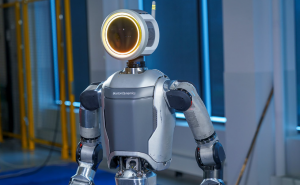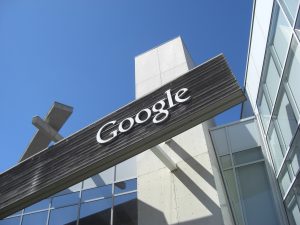Review: Surface Pro 2 skillfully bridges tablet-laptop gap
![]()
![]() The Microsoft Surface Pro 2 is a tablet on steroids, the coolest, best designed laptop replacement to hit the office. Not for casual users, this machine says its owner is a step ahead. From the Windows icon on its frame that is actually an inductive button that returns you to the start page from anywhere, to the heuristic word completion utility that learns not just your favorite words and names but short phrases, to the magnetic power plug that snaps into its unique receptacle on its edge, this tablet reeks of sophisticated design. Its inductive pen is much more precise than a finger or a touch-screen stylus, which makes it a perfect editing tool. And its breakneck speed – it can perform a reboot in less than 10 seconds – and tight integration with the Microsoft OneDrive — it unlocks cloud storage using your Microsoft account password – redefine pesonal computing. It combines the best of on-device computing with the power of tightly integrated cloud computing, making it, for instance, it is the ideal front-end for Microsoft SaaS offerings such as Office 365, which use the OneDrive.
The Microsoft Surface Pro 2 is a tablet on steroids, the coolest, best designed laptop replacement to hit the office. Not for casual users, this machine says its owner is a step ahead. From the Windows icon on its frame that is actually an inductive button that returns you to the start page from anywhere, to the heuristic word completion utility that learns not just your favorite words and names but short phrases, to the magnetic power plug that snaps into its unique receptacle on its edge, this tablet reeks of sophisticated design. Its inductive pen is much more precise than a finger or a touch-screen stylus, which makes it a perfect editing tool. And its breakneck speed – it can perform a reboot in less than 10 seconds – and tight integration with the Microsoft OneDrive — it unlocks cloud storage using your Microsoft account password – redefine pesonal computing. It combines the best of on-device computing with the power of tightly integrated cloud computing, making it, for instance, it is the ideal front-end for Microsoft SaaS offerings such as Office 365, which use the OneDrive.
Unlike Android and Apple iOS deviceyous, which use cut-down operating systems, the Surface Pro II runs Windows 8.1, so it can handle all Windows applications plus a growing number of tablet-like apps for everything from e-magazines to TV shows to games. The bright, high-definition screen is ideal for reading, viewing graphics and photographs and watching videos, even in full daylight, where most screen displays fade to illegibility. It has a highly responsive touch screen, front and rear video cameras, a mini-SD port and something lacking on other tablets – a USB 3 port. This allows users to connect a keyboard and mouse and use the Surface as a laptop that accepts thumb drives and other laptop peripherals.
Surface Pro 2 is heavier than Android and iOS tablets, but that extra weight is mostly battery, giving its five-hour working life under loads such as watching videos, reading and writing. When not in use, it sleeps and uses practically no power.
The unit’s screen is small compared to a business laptop, being barely large enough to accommodate two windows side-by-side in landscape mode. However, there’s a “miniDisplayPort” that can be used to connect the tablet to a larger desktop display. Its onboard memory (maximum 512 GB) is a fraction of the capacity of the huge disk drives on modern laptops. However, that memory is intended for applications and data that is in use. Everything else – from personal photos to finished projects – goes to OneDrive. This also makes it easy to share files of virtually any size between the Surface and other computers and with coworkers or family and friends. The combination supports offline work when WiFi is not available while providing the advantage of unlimited storage when connected to the Cloud.
Split personality
x
![]() The Surface does have a split personality between the tiled opening screen and the more familiar Windows desktop. This can be confusing at first, particularly for users who are new to Windows 8. However, the user interface becomes second nature over time, and it has advantages. For example, a user can jump between the desktop productivity environment and personal tablet applications at the tap of the Windows icon without having to minimize windows on the desktop.
The Surface does have a split personality between the tiled opening screen and the more familiar Windows desktop. This can be confusing at first, particularly for users who are new to Windows 8. However, the user interface becomes second nature over time, and it has advantages. For example, a user can jump between the desktop productivity environment and personal tablet applications at the tap of the Windows icon without having to minimize windows on the desktop.
All Windows 8 functions and Microsoft apps are available through both the touchscreen and keyboard/mouse interfaces. The built-in touchscreen keyboard supports Windows functions such as copy, cut & paste. However not all traditional third-party Windows applications are fully functional in tablet mode.
I decided not to purchase the optional attachable keyboard. Instead, I use a full-size wireless keyboard and mouse connected through the USB port. Away from my desk I use the touchscreen keyboard.
Service
x
My Pro II has proven very dependable other than an early virus infection that forced me to contact Microsoft support. The service was highly professional. The agent proved knowledgeable and persistent, going rapidly through four different strategies of increasing complexity before finding the key to fixing the problem, which has not reoccurred. This left me with respect for the quality of Microsoft service, and that’s important in a world of increasingly complex threats.
Conclusions
x
I wish I could say this is the tablet for everyone. It is not. If you want a tablet for casual personal use, this is not for you. It is too heavy, too complicated and too expensive for uses that a $300 Android tablet can do just as well.
However, if you are looking for a productivity device that can do everything your laptop does, is highly portable and can be used easily in your lap or on an airplane, then this is a device to consider. It may quickly become your main computer because of its speed, integration with the cloud and high resolution display, and it just happens to be portable, too. This is a new style of intuitive, convenient computing. I believe that once you get one, you will never go back to a laptop. And with the Pro 3 now on the market, the Pro 2’s base price of $799 is a good buy.
Photos courtesy Microsoft Corp.
A message from John Furrier, co-founder of SiliconANGLE:
Your vote of support is important to us and it helps us keep the content FREE.
One click below supports our mission to provide free, deep, and relevant content.
Join our community on YouTube
Join the community that includes more than 15,000 #CubeAlumni experts, including Amazon.com CEO Andy Jassy, Dell Technologies founder and CEO Michael Dell, Intel CEO Pat Gelsinger, and many more luminaries and experts.
THANK YOU













